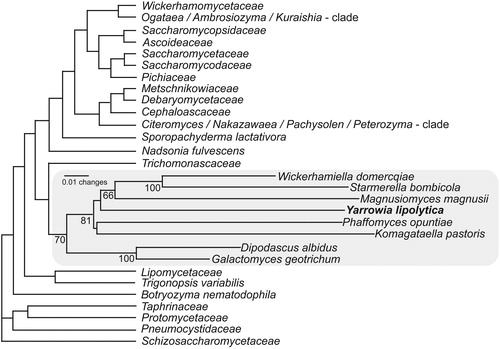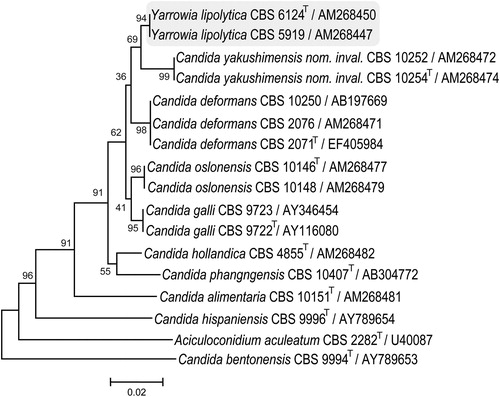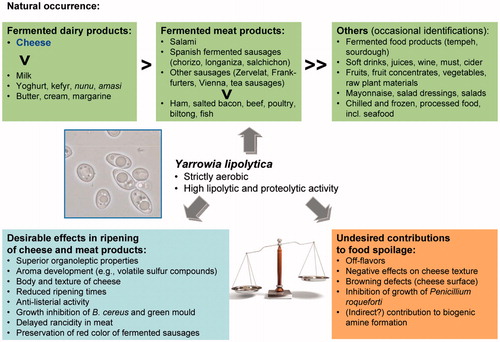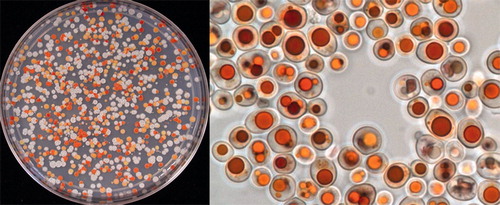Figures & data
Figure 1. Phylogenetic relationships among ascomycetous yeast genera and families based on neighbor-joining analysis of a concatenated dataset of gene sequences from LSU rRNA, SSU rRNA and translation elongation factor-1α showing the position of Yarrowia lipolytica. Adapted from Kurtzman et al. (Citation2011).

Figure 2. Phylogenetic placement of Yarrowia lipolytica and related species determined from D1/D2 LSU rRNA gene sequences. Culture collection accession numbers and GenBank sequence numbers follow species names. T represents type strains.

Figure 3. Schematic representation of impact of metabolic properties of Yarrowia lipolytica on its natural occurrence, ripening and spoilage of foods. As indicated by the balance, it will be crucial for a potential commercial application in the ripening of cheese or fermented meat products to favor the intended beneficial effects while suppressing the potential objectionable side effects of Yarrowia lipolytica. For further details, see the text. “>” (in horizontal or vertical direction) means higher prevalence and/or higher rate of detection.

Figure 4. Carotenoid production in Yarrowia lipolytica. Left: mating of two carotenoid-overproducing Yarrowia lipolytica strains, creating a progeny with a rich genetic diversity. White colonies have lost the trait to produce colored carotenoids. Colonies with different colors produce different carotenoids, and/or different quantities of carotenoids. Right: Yarrowia lipolytica cells from a fed-batch culture, showing canthaxanthin accumulation in the lipid bodies. Pictures courtesy of María Mayorga (DSM).


